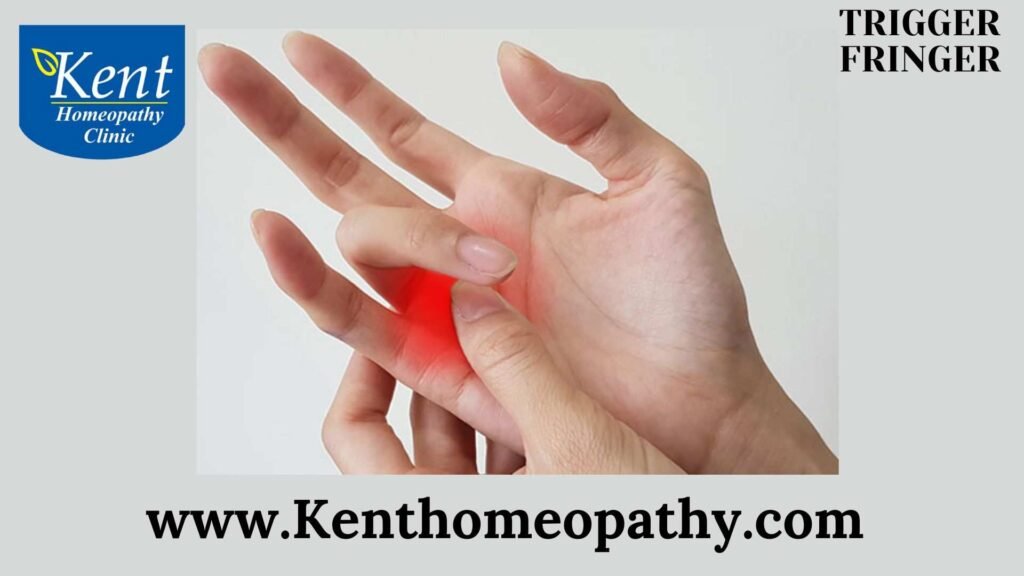Trigger finger

Trigger Finger: Unveiling Symptoms, Causes, and Types
Trigger finger, also known as stenosing tenosynovitis, is a condition that affects the fingers, causing pain, stiffness, and difficulty in straightening or bending the affected digit. This condition occurs when the flexor tendon becomes irritated and inflamed, leading to difficulties in the smooth gliding of the tendon through the tendon sheath. Understanding the symptoms, causes, and types of trigger finger is essential for accurate diagnosis and effective management.
Symptoms:
- Catching or Popping Sensation:
– Individuals with trigger finger may experience a catching or popping sensation when moving the affected finger. This occurs as the tendon struggles to glide smoothly through the inflamed sheath.
- Finger Stiffness:
– Stiffness is a common symptom, especially in the morning or after periods of inactivity. The affected finger may feel stiff and require effort to move.
- Pain at the Base of the Finger or Thumb:
– Pain is often localized to the base of the affected finger or thumb. The pain may be more pronounced during activities that involve gripping or grasping.
- Swelling or Lump:
– Swelling or the development of a tender lump at the base of the finger may be noticeable. This can be a nodule or thickening of the affected tendon.
- Difficulty Straightening or Bending the Finger:
– The hallmark symptom of trigger finger is difficulty in either straightening or bending the affected finger. The finger may get stuck in a bent position (flexed) and then suddenly snap or pop straight.
- Clicking Sensation:
– Some individuals may experience a clicking sensation when attempting to move the affected finger, resembling the sound of a trigger being released.
Causes:
- Repetitive Gripping or Grasping Movements:
– Activities that involve repetitive gripping or grasping motions, such as using hand tools or playing musical instruments, can contribute to the development of trigger finger.
- Underlying Medical Conditions:
– Certain medical conditions, such as rheumatoid arthritis, diabetes, and hypothyroidism, are associated with an increased risk of developing trigger finger.
- Gender and Age:
– Women and individuals over the age of 40 are more commonly affected by trigger finger, though it can occur at any age.
- Tendon Irritation:
– Irritation of the flexor tendon, often due to overuse or repetitive movements, can lead to inflammation and the development of trigger finger.
- Occupational Factors:
– Certain occupations that involve repetitive hand and finger movements, such as typing or gripping tools, may increase the risk of developing trigger finger.
Types:
- Primary Trigger Finger:
– Primary trigger finger is the most common type and typically occurs without an underlying medical condition. It is often associated with repetitive hand movements and overuse of the fingers.
- Secondary Trigger Finger:
– Secondary trigger finger is linked to an underlying medical condition, such as rheumatoid arthritis, diabetes, or other inflammatory conditions. In this type, the associated medical condition contributes to the development of trigger finger.
Contact to know more
Contact
Timings
Monday to Saturday:
11:00 AM to 02:30 PM
06:30 PM to 09:00 PM
